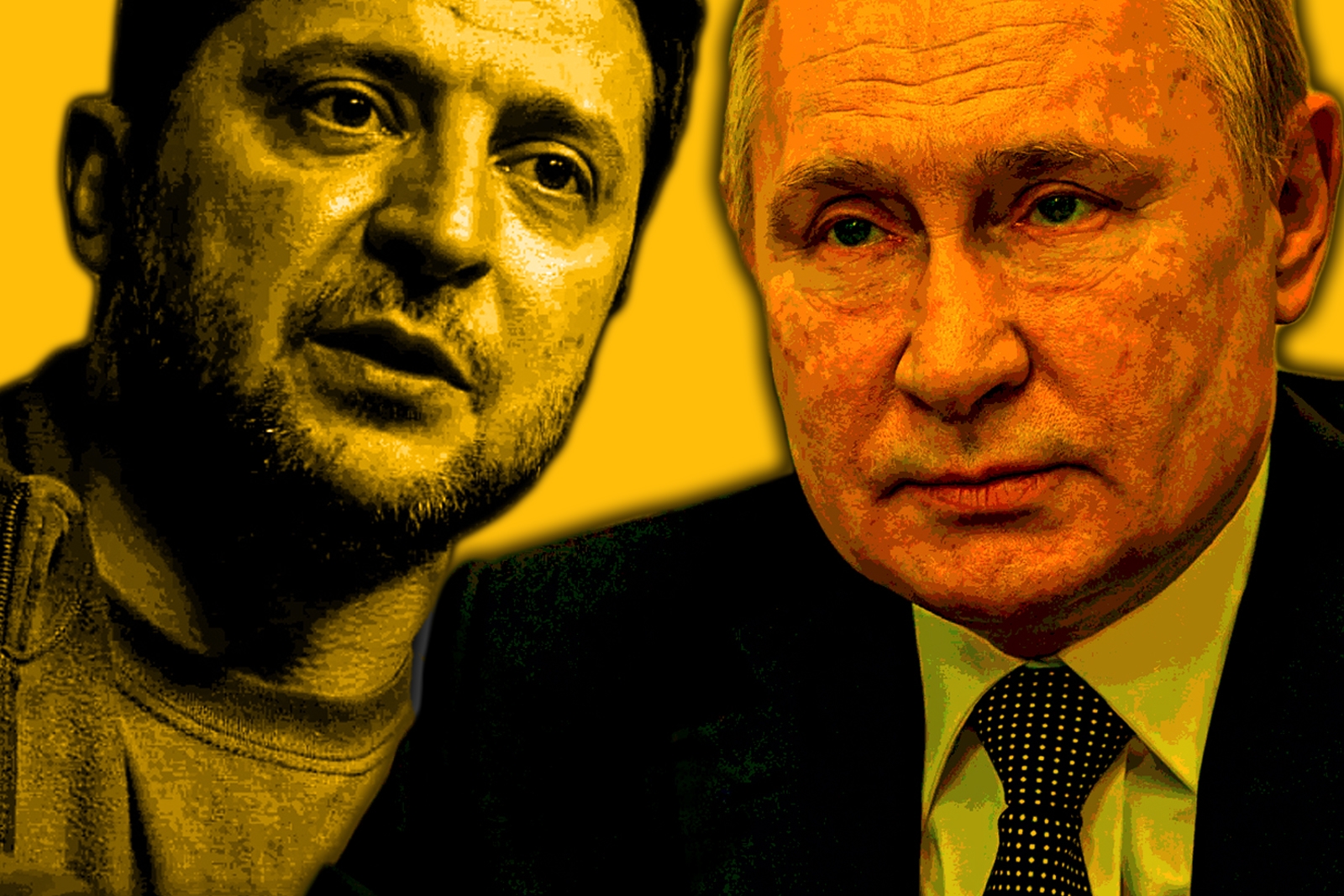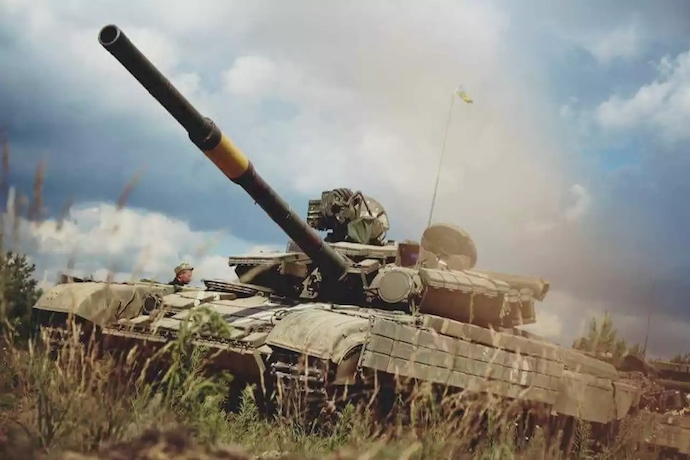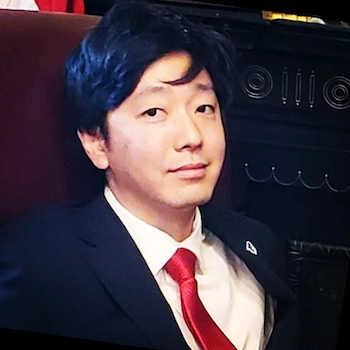
Making Sense of the Senseless: What is Putin Thinking?
Russia’s February invasion of Ukraine has killed by some estimates 2,000 Ukrainian civilians so far while millions of people are trying to flee the country.
Many are trying to make sense of these egregious acts of violence – stepping inside Russian President Vladimir Putin’s mind to understand how geopolitical motives can outweigh the devastating economic costs of this war. (Countries and businesses have deployed unprecedented measures to thwart the invasion via sanctions and severed business ties.)
As Prussian general and military theorist, Carl von Clausewitz, famously said, “war is an extension of politics.” And Putin’s geopolitical desires may be the ultimate form of politics because they may determine one of the most powerful countries in the world.
In his speech on February 23 about the “special military operation” occurring before the world’s eyes, the man with the expressionless face made mention of Nazis and Russian genocide (without substantiated evidence), but also the expansion of Western influence.
Well-known political scientist John Mearsheimer conducted a lecture in 2015, titled “Why is Ukraine the West’s Fault?” where he notes that the expansion of NATO for Russia is a massive security threat, akin to the Cuban Missile Crisis. (The lecture now has more than 17 million views on YouTube.)
In February 2014, Ukraine’s ‘Revolution of Dignity’ drove the country further into a Western and pro-Europe mindset while becoming weary of Russian interests – a significant event that has led to the current conflict.
Ukraine has also expressed a desire to join NATO for its security interests while fighting against pro-Russian separatists in a civil war over the past eight years.
However, it’s clear Russia will go to great lengths to prevent its resource-rich neighbor from joining the 30-country alliance created in response to the start of the Cold War between the U.S. and the former Soviet Union.
In 2008, Russia invaded former Soviet state Georgia after it expressed a desire to join NATO, similar to Putin’s response now with Ukraine. Former Russian President Dmitry Medvedev stated that they invaded the country to prevent more former Soviet states from joining NATO.
So, it is sensible to think one of the items for negotiation is to ensure Ukraine will not become a NATO member – likely Putin’s main objective.
For Russia, this is an existential security issue, and Putin appears willing to pay any price for hard security. The SWIFT banking threat and sanctions were signaled by the West as consequences for war, but still, Russia carried on with the invasion.

Battle for the Heartland
This latest bloodshed in Europe is a gamble for security guarantees to Russia from the West, but the greater factor behind this blatant attack is Ukraine’s geopolitical significance.
In 1904, one of the seminal scholars on geopolitics, Sir Halford Mackinder, introduced a compelling concept dubbed ‘Heartland Theory.’
Mackinder stated his case that the territory from modern Russia, Ukraine, and Kazakhstan to parts of Iran and Afghanistan is called the Heartland or Pivot Area – and if the region fell under consolidated control, it would be a dominant power.
He sums up the importance of this land by asserting:
Who rules East Europe commands the Heartland;
who rules the Heartland commands the World-Island;
who rules the World-Island commands the world.
— Mackinder, Democratic Ideals and Reality
By attempting to control Ukraine, Russia could take one step closer to possessing the Heartland.
While no country has ever successfully controlled the Heartland, Russia was the closest during the Crimean War from 1853 to 1856 – but was stopped by British and French forces.
However, since 2014, Russia has had control of the Crimean Peninsula and needs a way to reach it securely by land.
While the Crimea and Donbas regions – partly controlled by Russian separatists – are concentrated with Russian-speaking Ukrainians, the geography of southeast Ukraine might be a more critical factor.
If Russia takes over control of those regions, it obtains land access to warm water ports that it currently lacks.
Russia is currently concentrating a siege on Kherson, Mariupol, and Melitopol in the south and southeast of Ukraine. Securing those cities and their connective roadways will create that key supply line into Crimea, while controlling Kherson increases the buffer zone to defend it. The capture of Odessa, another key port city, also helps bolster Russian control into Eastern Europe.
These cities under Putin’s control enable Russia to increase power by either threat of further invasion or through international trade. (It’s a key factor of why fighting in that region has escalated.)
No to NATO
By this point, the desired outcomes for Russia are evident – namely, a NATO-free Ukraine and territorial control of Southeast Ukraine.
But, global media coverage of Russia’s invasion has highlighted that the larger forces to the east have been stymied at times by the Ukrainians.
Russia currently has a 40-mile-long tank convoy threatening the Ukrainian capital of Kyiv – a move that could push Ukraine into the submission that Sergei Lavrov hoped for at the start of the invasion.
The brute force strategy, however, has its issues from logistical implementation to poor performance on muddy surfaces (just like the ’64 Skylark from My Cousin Vinny).
Additionally, NATO could intervene, with the capability of compromising the convoy with an arsenal of smart bombs.
Russia hasn’t fared much better in the air as well. Its air force has struggled to play a dominant role as expected by experts. If NATO wanted to aid Ukraine in the air, it could work to establish a no-fly zone but that carries significant risks of escalating into a wider war.
Yet Russia has the means to circumvent these obstacles and others simply by threatening to escalate the war.
As reported, the country issued a nuclear deterrence alert – meaning that intervention from a NATO member could cause Russia to respond with nuclear consequences.
And that response is a bona fide concern given reports that Russia deployed two-thirds of its military to Ukraine. Perhaps Russia is overextended into this operation and needs such threats to ensure the viability of a successful war.
It also sheds light on Russia’s struggle to control the airspace. If it deploys most of its air forces to Ukraine, then Russia is largely defenseless. That could lead to its demise if NATO chose to become aggressive suddenly.
Russia needs to escalate the war to brinkmanship to ensure its security – its primary objective. Putin’s actions reflect that lacking sense of security has led to the senseless killing of Ukrainians and Russians.
In the game of geopolitics, power is currency that trades to security. In his 2005 annual address to parliament, Putin once stated: “First and foremost it is worth acknowledging that the demise of the Soviet Union was the greatest geopolitical catastrophe of the century.” It is this desire to return Russia to its former glory that makes sense of Vladimir Putin’s invasion of Ukraine.


